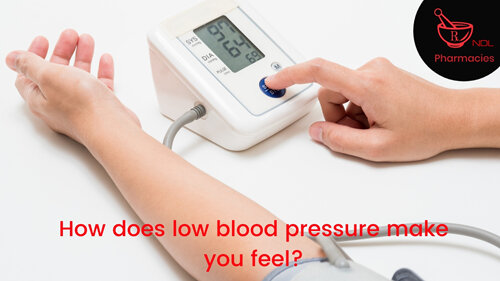Blood pressure is the amount of power or force exerted by the blood to the blood vessels as it travels around the circulatory system of the body. Most adults make an effort to prevent hypertension or high blood pressure. However, it is also common for people to get hypotension or low blood pressure.
What do blood pressure numbers mean?
When someone measures our blood pressure, we hear them express it with two separate numbers. One is over the other, just like in fraction numbers. These two numbers represent different things.
The number on top is the systolic pressure. This measures how hard the blood pushes against the arteries while the heart contracts to eject blood.
The number below is the diastolic pressure. This measures how hard the blood pushes against the arteries while the heart relaxes.
The measurement of blood pressure is in millimetres of mercury (mm Hg). Ideally, a healthy person has a normal blood pressure if the reading falls under 120/80 mm Hg but over 90/60 mm Hg.
A person has a low blood pressure even if just one of the numbers (systolic or diastolic) goes down to the 90/60 level. Thus, it is considered low in the following conditions:
Causes of Hypotension
Possible causes of hypotension are dehydration, hot weather, infection, loss of blood, stress, fear, and reaction to certain medications.
Risk factors include pregnancy, hypothyroidism, diabetes, alcoholism, and underlying heart and liver diseases.
Low Blood Pressure Symptoms
Hypotension is generally not alarming. Still, effects like lightheadedness, nausea, and dizziness can make you feel uncomfortable.
Keep in mind that symptoms can be different for each person. Some people may faint due to low blood pressure while others may just experience fatigue, headache, or a blurry vision.
Some symptoms depend on the cause of hypotension. For instance, if the underlying cause is heart disease, the patient may experience heart palpitations. However, if the cause is an infection, the patient may develop a fever as a symptom.
Others may also experience having low blood pressure and high pulse simultaneously. While this condition can be normal, it may also be because of a different and more serious disorder.
Lastly, when you have severe hypotension, your body will not be able to deliver enough oxygen to vital body parts. This may lead to a life-threatening condition called shock.
Signs of shock include paleness of the skin, confusion, and rapid and shallow breathing. Immediate medical help is needed to prevent permanent damages in the organs of the body.
Ways to Treat Hypotension
-
Avoid dehydration by drinking plenty of water. Increase fluid intake during hot weather.
-
Limit alcohol intake.
-
Eat a balanced meal but add salt into your diet.
-
Eat foods high in Vitamin B-12 like eggs and beef.
-
Start exercising.
-
If you have diabetes, make sure to monitor and control your blood sugar levels.
-
Ask your doctor for prescription drugs. You may conveniently purchase medicines from the Royal Oak Pharmacy in Auckland.



